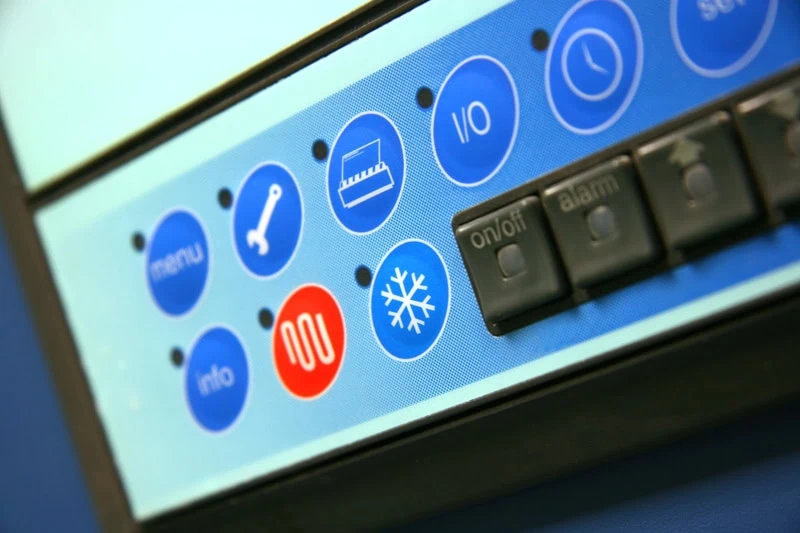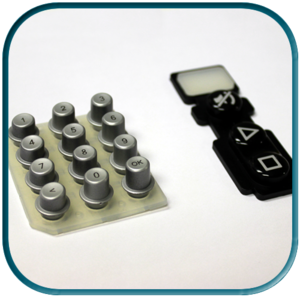Membrane Switches Explained: A Comprehensive Overview to Their Advantages
Membrane switches over stand for a sophisticated and versatile option for producing interface throughout a range of markets. Their multilayered design not only makes certain functionality via easy stress yet also uses substantial benefits, such as durability and customization. As industries progressively look for trusted and efficient control interfaces, understanding the certain advantages and applications of membrane layer switches comes to be vital. Nevertheless, the intricacies of their layout and application existing special obstacles that benefit closer evaluation. What factors should be taken into consideration to completely take advantage of their potential in contemporary applications?
What Are Membrane Layer Switches?

When stress is put on the membrane button, the layers make contact, completing an electric circuit. This basic device enables a large range of applications, from customer electronic devices to commercial machinery. Membrane layer switches are frequently created to be waterproof and immune to dirt and pollutants, making them suitable for environments where toughness is essential.
In addition, the flexibility of the materials used in membrane switches helps with ingenious layouts that can conform to various forms and measurements. This flexibility adds to their popularity in diverse fields, consisting of clinical gadgets, automotive controls, and home appliances. Overall, membrane layer switches over stand for an important component in modern-day interface innovation, connecting the gap in between individuals and electronic systems.
Key Advantages of Membrane Layer Switches
Amongst the myriad of interface options available, membrane switches attract attention for their one-of-a-kind mix of advantages. One of the key advantages is their lightweight and compact layout, which enables combination into a wide variety of tools without adding significant bulk. This is specifically beneficial in applications where space is restricted.
Furthermore, membrane switches offer durability and resistance to ecological elements. They are commonly created with products that can withstand dampness, dust, and numerous chemicals, making them ideal for extreme conditions. This longevity adds to a much longer life expectancy compared to typical mechanical switches.
Another substantial advantage is the flexibility in customization. Membrane layer buttons can be printed with various graphics, colors, and structures, permitting customized styles that satisfy specific branding or practical demands. This adaptability extends to the number of layers and circuit options, offering designers with multiple setups.
In addition, the responsive comments given by some membrane changes improves user experience, making them more user-friendly to run. Last but not least, the ease of cleaning and maintenance additionally strengthens membrane switches as a functional selection in both customer and commercial applications. Membrane Switches. Generally, these vital advantages make them a recommended solution for numerous developers and producers
Applications in Numerous Industries
Exactly how do membrane layer buttons find their place throughout diverse sectors? Their versatility and functionality make them integral components in markets varying from medical care to customer electronic devices. In medical gadgets, membrane layer buttons are used for their simplicity of cleaning and resistance to contamination, making sure health in atmospheres where sterility is important.
In the customer electronic devices sector, these buttons supply smooth, easy to use interfaces that enhance product aesthetic appeals while preserving sturdiness against wear and tear. Automotive applications take advantage of membrane switches over also, where they are utilized in dashboards and control board, supplying trusted efficiency in difficult conditions.
In addition, commercial equipment utilizes membrane layer buttons for control panels due to their robustness, capacity to endure severe environments, and personalized styles that accommodate particular operational demands. The food industry leverages membrane layer switches for their ease of usage and resistance to spills, making certain functional efficiency in busy setups.
Inevitably, the adaptability of membrane layer switches throughout these diverse applications emphasizes their crucial function in modern-day technology, boosting user interaction while fulfilling industry-specific requirements. Their proceeded evolution guarantees further assimilation into emerging fields and ingenious items.
Style and Modification Options
The style and customization choices readily available for membrane layer buttons are essential for customizing user interfaces to meet details customer requirements and visual preferences. These buttons can be designed in different forms, sizes, and layouts, permitting smooth integration into varied applications. The adaptability in design indicates that suppliers can create distinct user interfaces that improve usability and maintain brand identity.
Custom-made appearances, shades, and graphics can be used to the surface of the membrane button, giving an opportunity for branding and user engagement. Furthermore, backlighting choices, such as LED illumination, can be incorporated to improve exposure in low-light conditions, thus enhancing performance.
Useful components can additionally be tailored, consisting of tactile comments and actuation force, which can be adapted to fit different user communications. The selection of products, such as polyester or polycarbonate, enables for variations in longevity and ecological resistance, satisfying the specific demands of different sectors.
Inevitably, the considerable design and customization abilities of membrane layer switches enable firms to produce aesthetically attractive and user-friendly user interfaces, making sure that their items fulfill both visual and practical requirements successfully. Membrane Switches.
Factors To Consider for Application
Implementing membrane layer switches over requires cautious factor to consider of various elements to ensure optimal performance and customer experience. Factors such as exposure to moisture, severe temperatures, and chemical compounds can dramatically impact the switch's efficiency and longevity.

An additional important element is the switch's layout and format. Ensuring that the tactile feedback and actuation force align with customer assumptions enhances usability. Conducting individual testing can give beneficial understandings right into the ideal style.
Furthermore, compatibility with electronic elements need to be examined. The switch's circuitry should align with the general system architecture, making certain reputable signal transmission and minimizing disturbance.
In addition, manufacturing methods and prices need to be examined. The option between go to this web-site customized styles and basic models can lead and influence both budget time.
Last but not least, take into consideration repair and maintenance. Membrane buttons may require specific cleansing and care procedures to preserve their appearance and capability with time. By attending to these considerations, companies can execute membrane buttons that satisfy their operational demands while offering a favorable individual experience.

Verdict
In conclusion, membrane switches over represent a flexible and resilient control interface like it suitable for a vast range of applications across several industries. Membrane Switches. As innovation proceeds to progress, the relevance of membrane layer buttons in contemporary gadgets stays considerable, using both performance and aesthetic appeal.
Membrane layer switches stand for a advanced and next versatile solution for developing user interfaces across a variety of markets.Comprehending the basic parts of contemporary electronic interfaces, membrane layer switches are a type of user interface tool that consist of versatile, slim layers of material. In general, membrane switches represent an essential aspect in modern individual interface modern technology, connecting the gap in between users and electronic systems.
Among the myriad of individual interface choices available, membrane switches over stand out for their special mix of benefits.The layout and personalization alternatives readily available for membrane layer switches are vital for customizing interfaces to fulfill particular individual demands and visual choices.